Samsung Galaxy S23 Plus: Two-minute preview
I'm a bit torn over the loss of the contour on the new Samsung Galaxy S23 Plus. In Samsung's newest handset line, the S23 series, that raised bit of metal surrounding the camera array is gone. It's a cleaner look that I like, but I also worry that this 6.6-inch phone, and its smaller 6.1-inch sister (the Galaxy S23), have lost a signature look and a distinction from the rest of the smartphone pack. You read our hands-on Samsung Galaxy S23 review for more on the smaller phone, or our hands-on Samsung Galaxy S23 Ultra review for our opinion on the even more capable phone.
The story of the Samsung Galaxy S23 Plus is not so much the cleaned-up exterior as it is what's inside. All three of Samsung's new flagship phones feature the new Qualcomm Snapdragon 8 Gen 2 processor. Strike that – they feature a special edition of that SoC, dubbed Snapdragon 8 Gen 2 Mobile Platform for Galaxy.
It's a nifty, bespoke name that defines one little bit of special sauce within these Android 13 handsets: all the CPUs are overclocked to what may be an industry-leading 3.36GHz.
Most mobile CPUs, including Qualcomm's Snapdragon 8 Gen 1 and Apple's formidable A16 Bionic inside the iPhone 14 line, are fast enough for the vast majority of users. This extra bit of juice that Samsung and Qualcomm have coaxed out of the 8 Gen 2 could mean better video capture at the highest resolution, smoother gaming, and more powerful CPU-intensive operations like 8K video editing.
As you'll see from my hands-on experience, I certainly didn't have enough time to truly test that performance (let alone benchmark it). Still, that CPU is central to the ongoing story of the Samsung Galaxy S23 lineup, which includes the Galaxy S23, the Galaxy S23 Plus, and the bold Galaxy S23 Ultra.
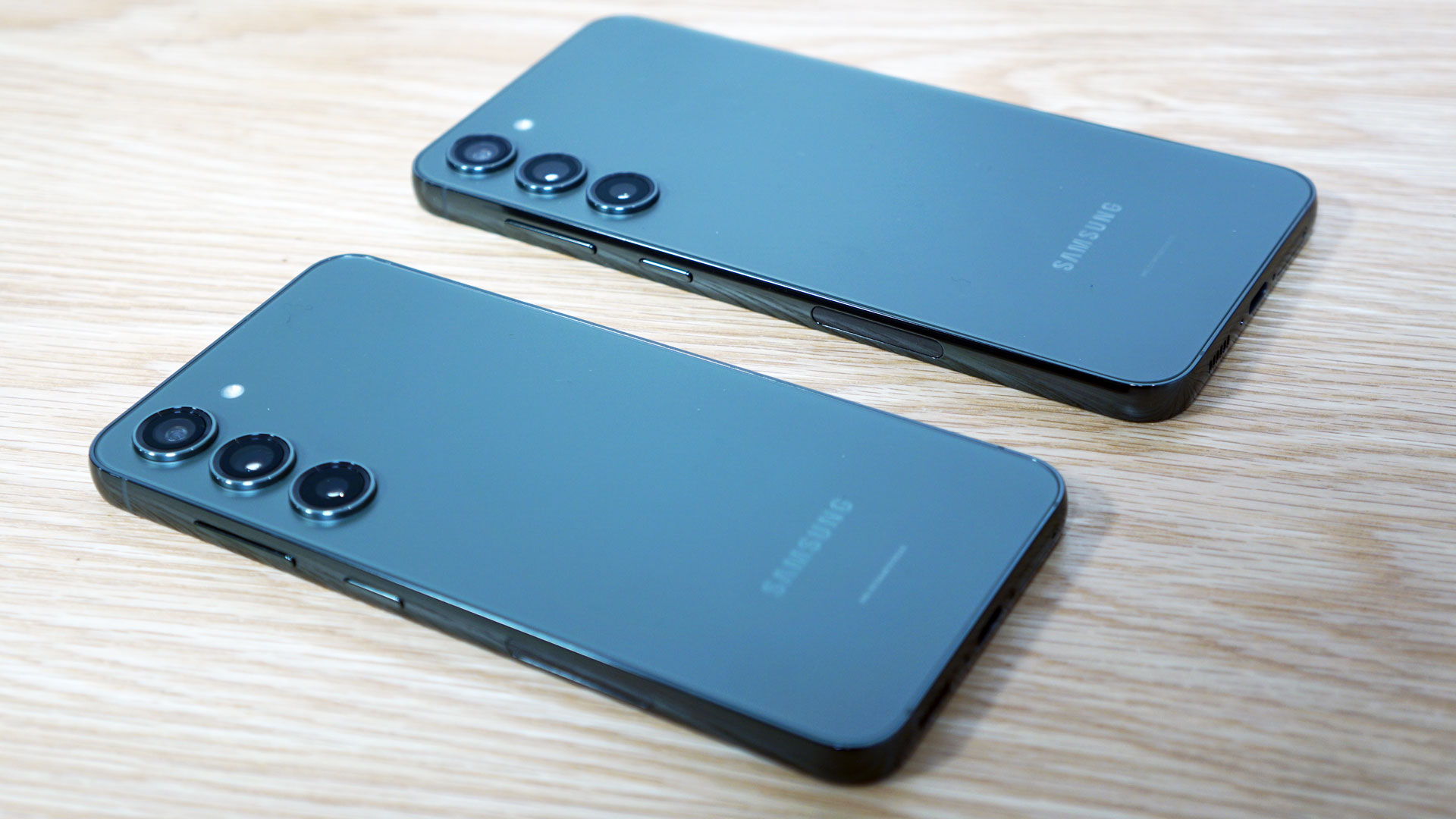
That processor is important to keep in mind when you look at the largely unchanged camera array. It's still a 50MP wide, 12MP ultrawide, and a 10MP optically stabilized 3X optical zoom array. The front camera is now 12MP, up from 10MP on the Galaxy S22 Plus.
Samsung is claiming better photography, mostly through the power of the upgraded CPU and its more powerful AI features. In short, and even in our limited hands-on time, those promises pan out.
Samsung didn't fix what wasn't broken on the 6.6-inch AMOLED display. There's still an ultrasonic fingerprint reader underneath, and the selfie camera punch hole near the top. Everything still looks bright and colorful. Samsung did up the adaptive refresh rate capabilities, so now they step all the way down to 1Hz and still go up to a buttery-smooth 120Hz.
Even though the Samsung Galaxy S23 Plus is a virtual duplicate of the Galaxy S23, there are obvious (size) and crucial differences.
Samsung has kept the dimensions virtually unchanged from the Galaxy S22 Plus, but compared to the S23, the S23 Plus is a larger phone that feels more substantial. That larger Gorilla Glass Victus 2 and Armor Aluminum body leaves room for a bigger 4,700mAh battery (200mAh larger than the one in the Galaxy S22 Plus) and a larger cooling chamber.
The Galaxy S23 Plus starts at $999.99/ £1,049 / AU$1,649, which is $200 / £200 / AU$300 more than the Galaxy S23 starting price. While both the S23 and S23 Plus have 8GB of RAM, the Galaxy S23 Plus starts with 256GB of storage and goes up to 512GB. The base Galaxy S23 starts with just 128GB of storage, and tops out at 256GB.
In addition to more storage, the Plus also adds UWB (ultra-wideband) connectivity, which could be used for precision location of the phone and other connected devices (think of what Apple does with its UWB and Find My features).
No single element jumps out as the reason to upgrade from a Galaxy S22 Plus. However, it could be a compelling choice for those coming to the Galaxy line for the first time, those who might dismiss the too-small Galaxy S23, and find the powerful Galaxy S23 Ultra overkill and too expensive.
I'll know more, though, when I get a chance to fully review the phone.
Samsung Galaxy S23 Plus hands-on: Price and availability
- Starts at $999.99 / £949 / AU$1,649
- Same price as last year
- You get more storage for your money
At $999.99, pricing for the base model of the Galaxy S23 Plus in the US remains unchanged since last year; however, you're now getting 256GB, double the storage, for that price. That's a nice little value upgrade in these cash-constrained times. With the top-tier storage now upped to 512GB, you'll pay $100 more than for last year's 256GB top model.
In the UK and Australia, the prices of the two phones have been hiked by £100 / £150 and AU$100 and AU$200 respectively.
For comparison, the Galaxy 23 Ultra offers up to 12GB RAM and 1TB of storage.
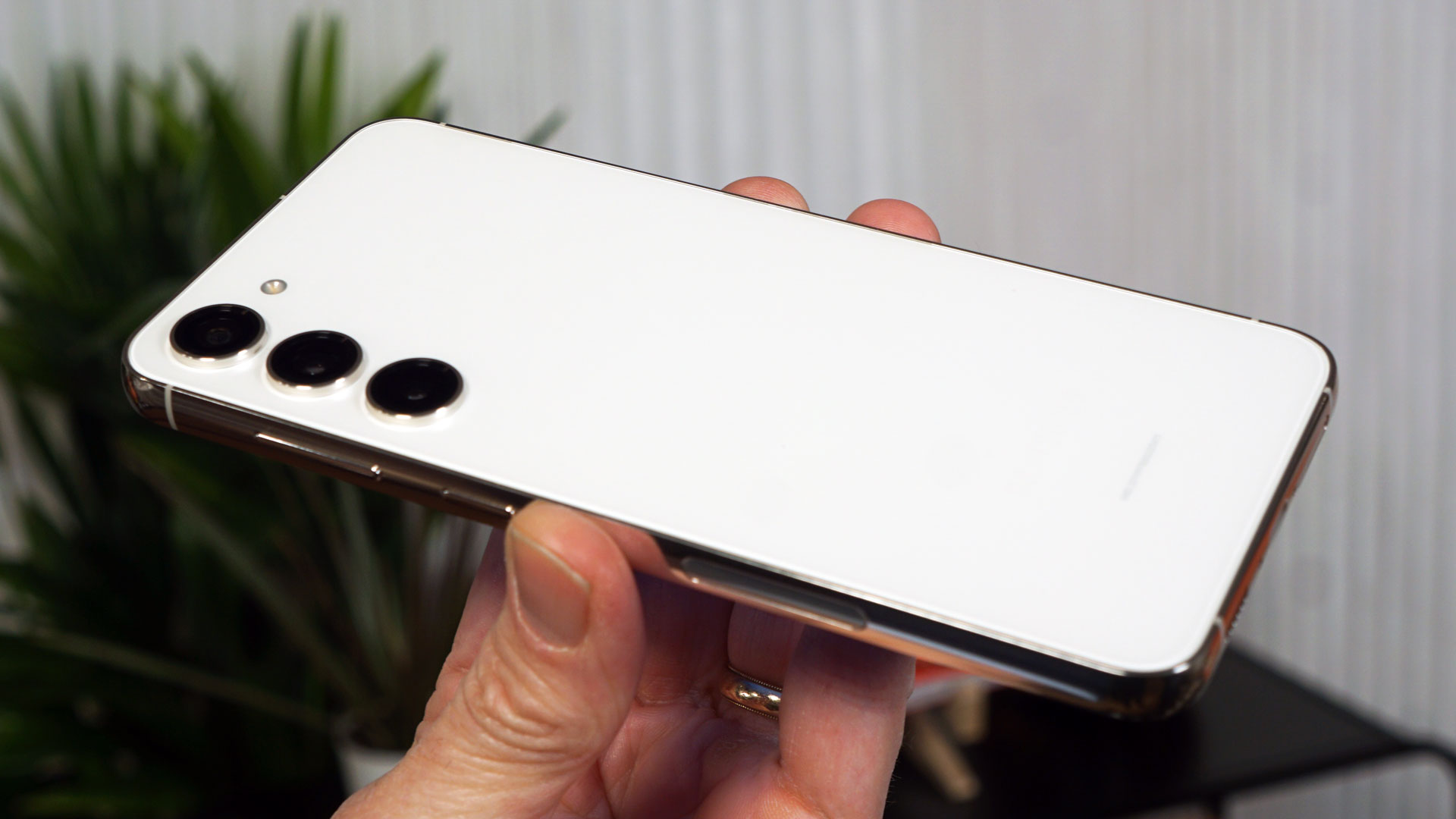
Samsung Galaxy S23 Plus hands-on: Specs
As mentioned above, the Samsung Galaxy S23 Plus comes in two storage variants, 256GB and 512GB, and both have 8GB of RAM.
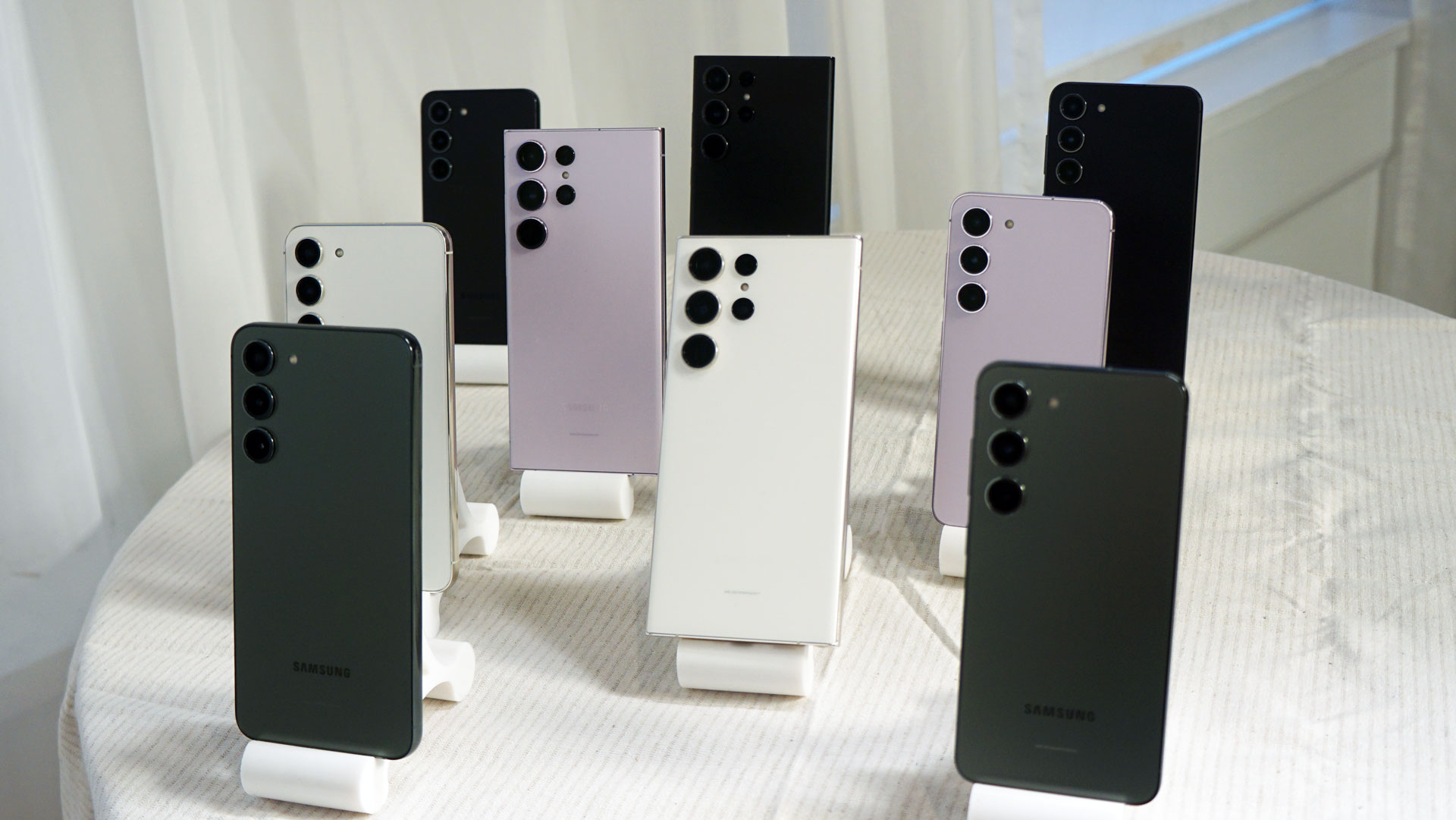
Samsung Galaxy S23 Plus hands-on: Design
- Design changes make it cleaner and simpler
- Excellent look, feel, and materials
- Nice Gorilla glass upgrade
Samsung has taken a relatively light touch with the Galaxy S23 lineup, making a handful of design changes that move the phones a step or two away from their Galaxy line heritage.
For the 6.6-inch Galaxy S23 Plus (and the Galaxy S23) this means removing the iconic contour from around the camera array. Now all three lenses float near the upper-left side of the phone's brushed glass Gorilla Victus 2 back (there's also glossy Victus 2 glass covering the display).
It's a very clean look, but it means the phones look a little less obviously part of the Samsung line. To avoid confusion, Samsung has kept its name prominently displayed on the back.
Despite removing the bit of Armor Aluminum comprising the contour, the dimensions of the Galaxy S23 Plus are almost exactly the same as those of the Galaxy S22 Plus. Its 76.2 x 157.73 x 7.62mm and 195g frame was almost a perfect fit for my hand – slightly larger than my iPhone 14 Pro, but a little smaller than the 6.7-inch iPhone 14 Pro Max – and the curved metal band surrounding the device felt cool and smooth to the touch.
There are a few other design alterations. The power and volume buttons have been moved down a little on the edge of the device (maybe that'll make them easier to reach) and some antenna bands have been repositioned. Even the bottom edge speaker-grille holes, which are next to the USB-C port, mic holes, and SIM slot, are slightly larger.
For the first time, some external portions of the phones are made from recycled materials, including the volume and power buttons, and the speaker grille at the very top of the display. In addition, Gorilla Glass Victus includes some recycled glass, and some of the phone's packaging is made from recycled materials. Even the plastic cover you'll peel off the screen is partially recycled.
There's a nice collection of colors to choose from. I've seen the Cotton, Black, Lilac, and Green models, and there will be additional colors, like Red, which will only be available only through Samsung.com.
The entire line of Galaxy S23 devices are IP68-rated, which means a drop in water or a roll in dirt should not bother any of them.
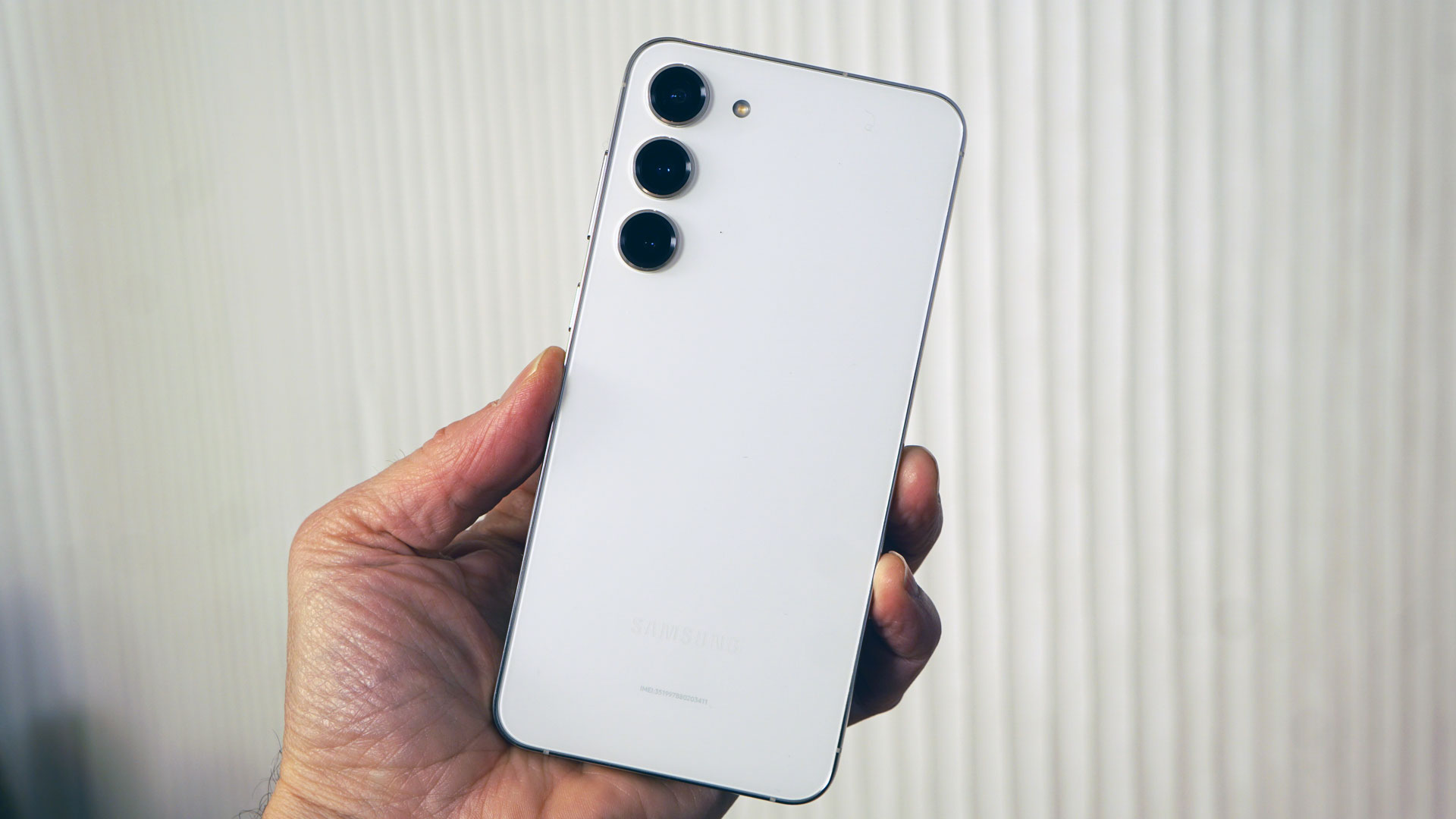
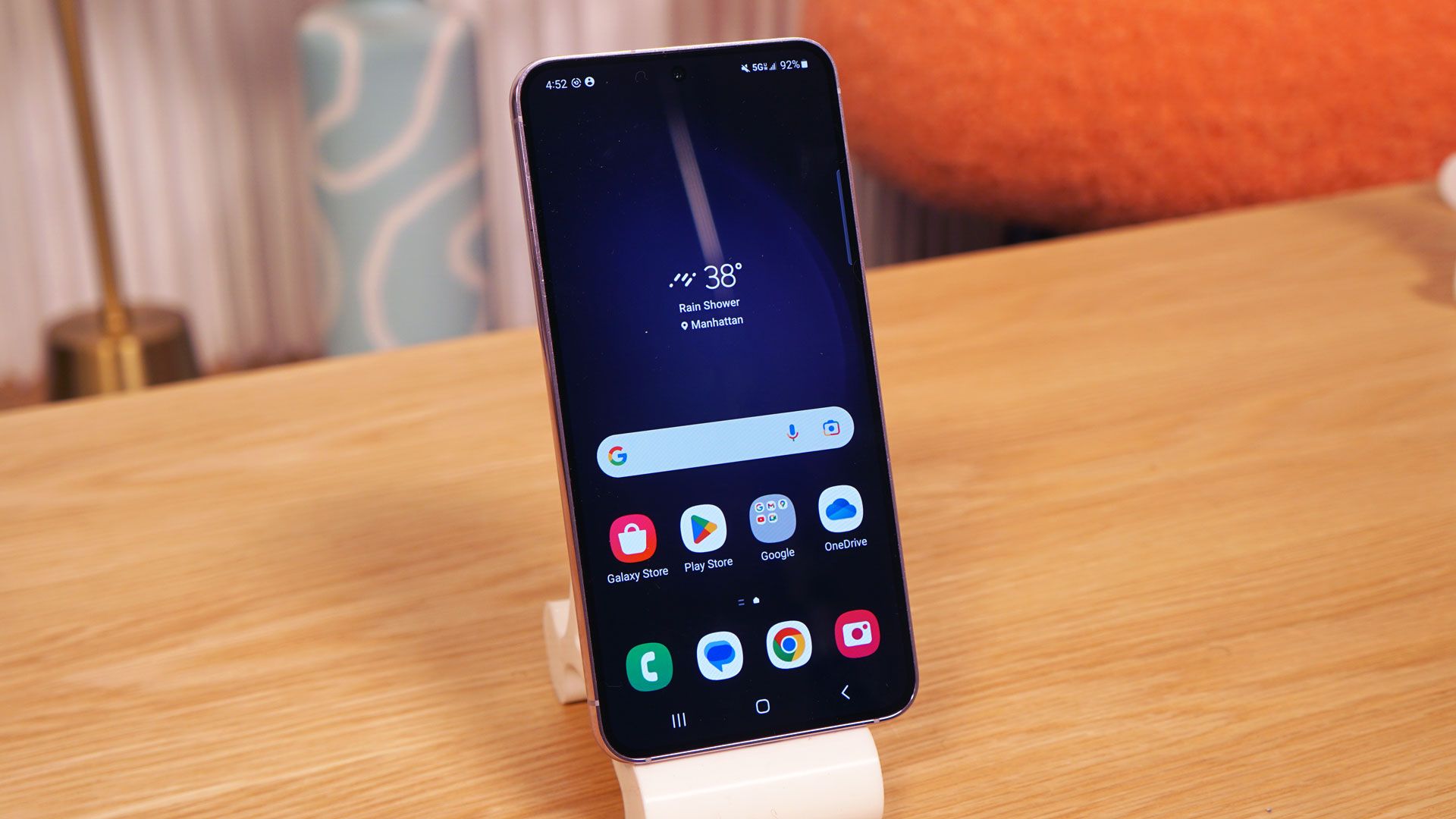
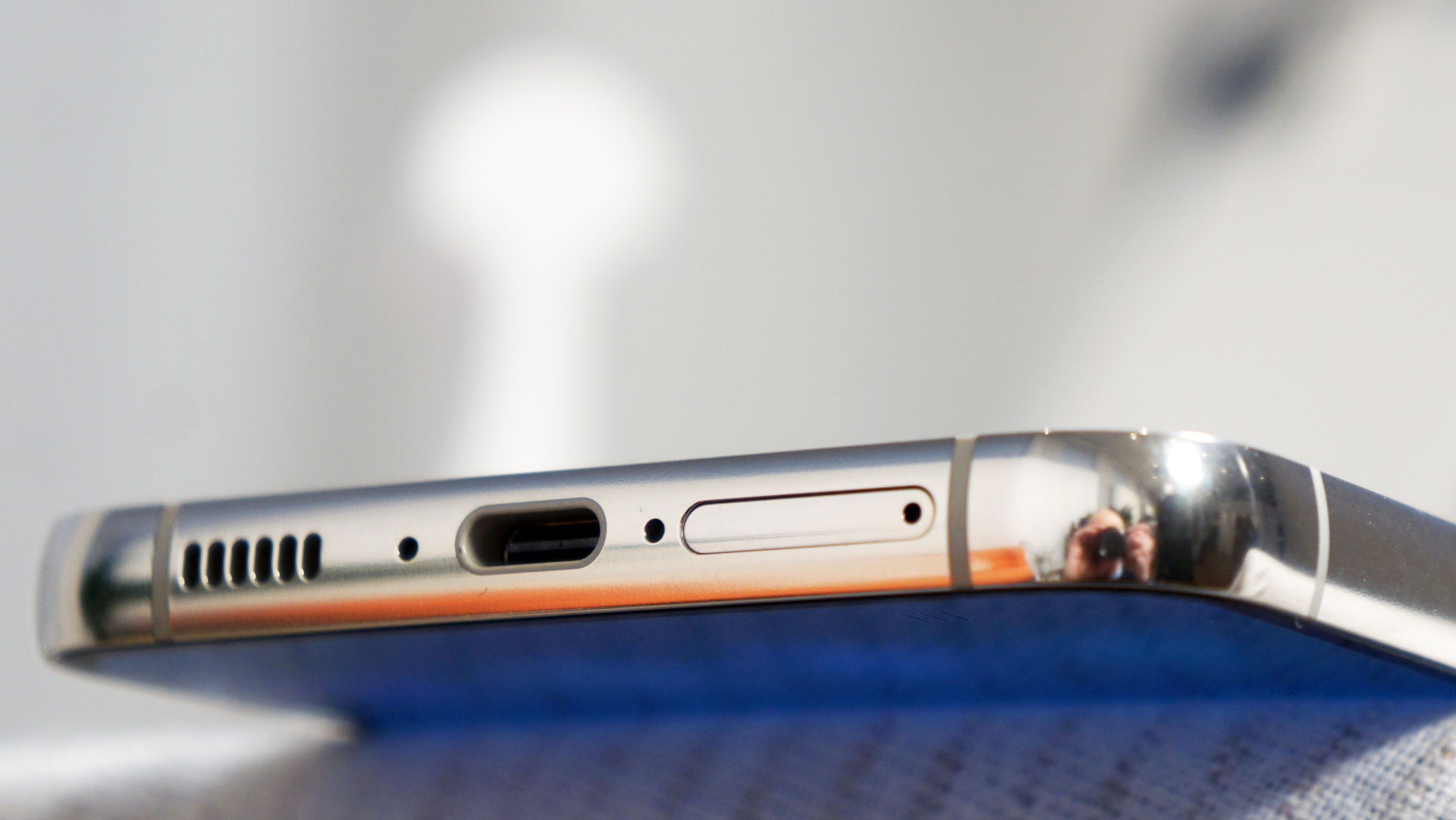
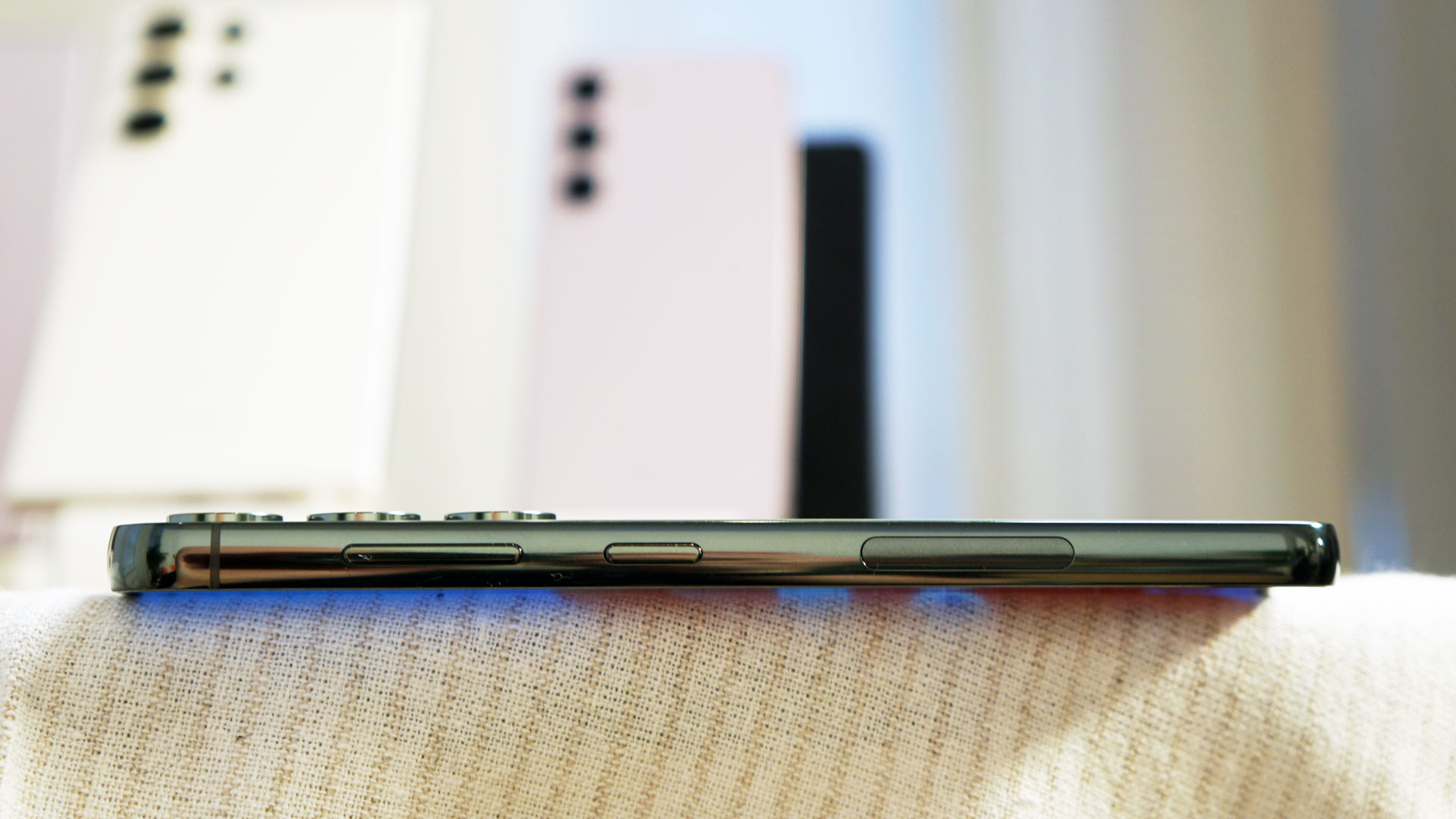
Samsung Galaxy S23 Plus hands-on: Display
As with most other Galaxy S23 line aspects, the AMOLED display hasn't changed much since the S22 line.
The Samsung Galaxy S23 Plus's 6.6-inch screen is big, bright, and responsive. The adaptive refresh rate tunes the screen depending on what you're doing, down to 48Hz. In my limited experience, this means smooth-scrolling motion and action in the YouTube videos I played.
The phone also still supports 240Hz touch-sampling for speedy gaming response.
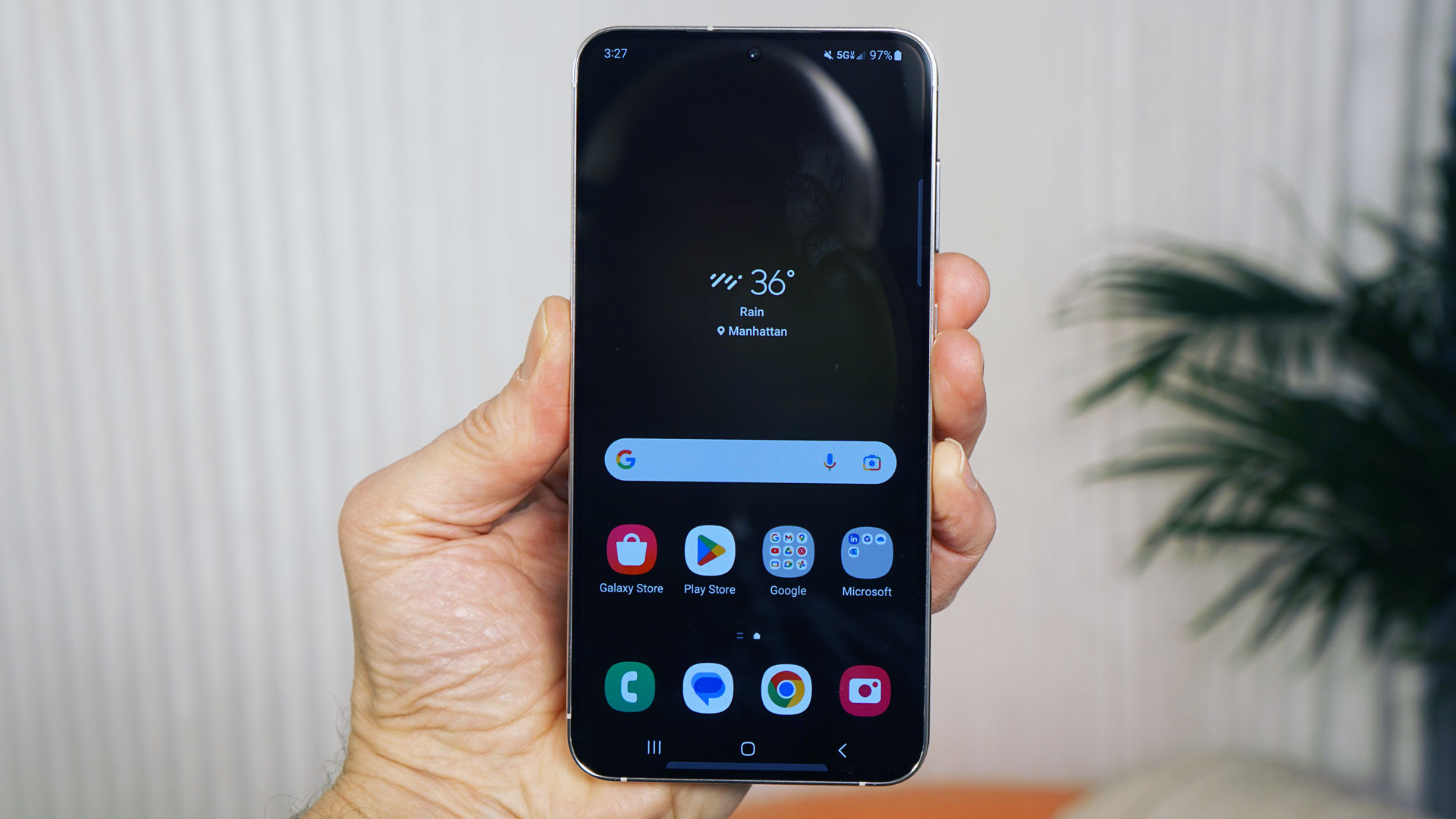
I dipped into the settings to turn off Adaptive refresh (and possibly save some battery life), and I noticed how different the scrolling looked.
It's a responsive screen that had no trouble beating back the bright light set up for our product photography. That's likely thanks to the 1,750 nits of peak brightness, although typically the screen will run at 1,200 nits.
The phone's adaptive brightness system now includes more steps to properly adjust for your various viewing environments, although this was something that was hard to see in my brief hands-on time.
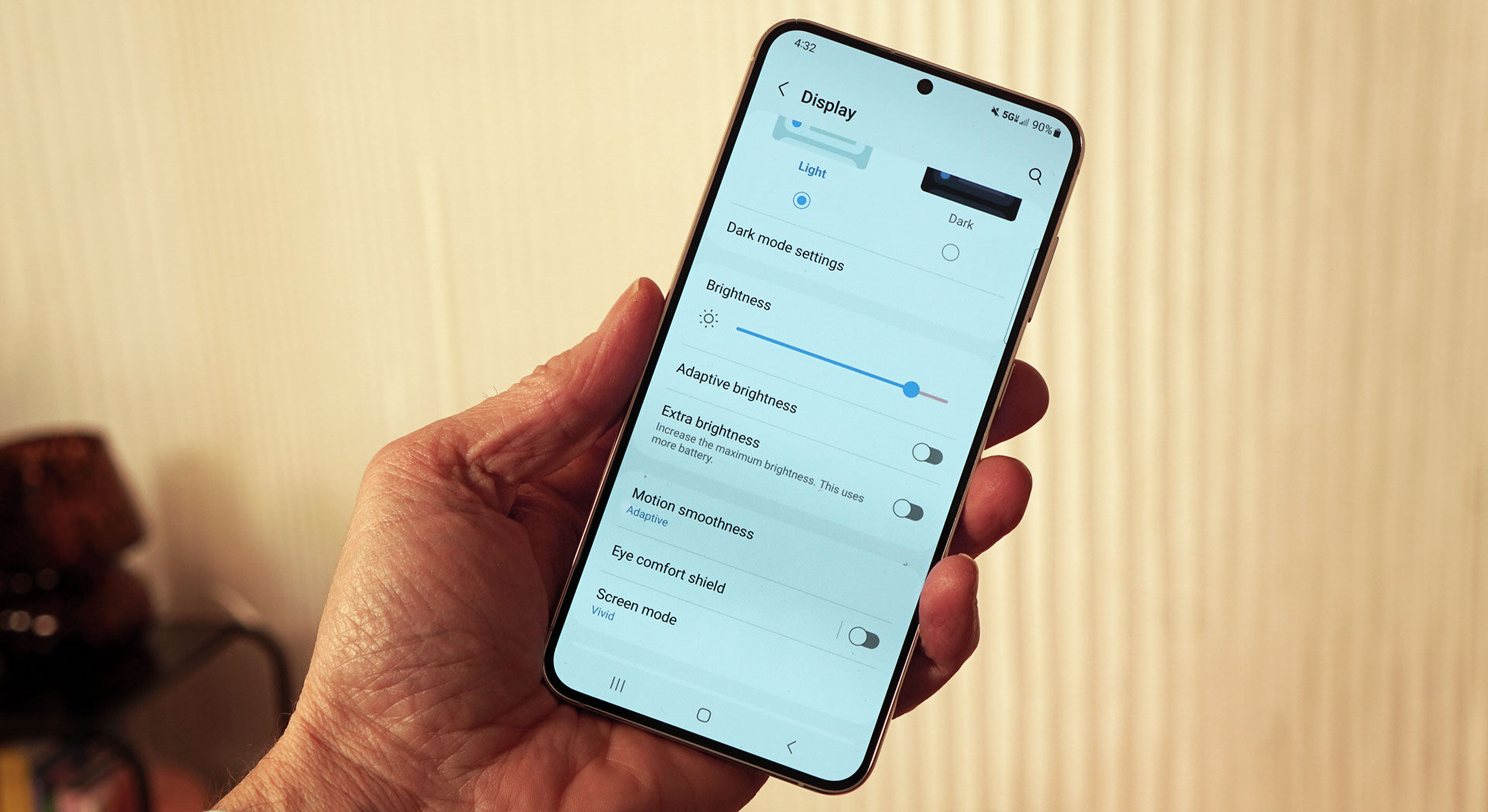
Samsung Galaxy S23 Plus hands-on: Cameras
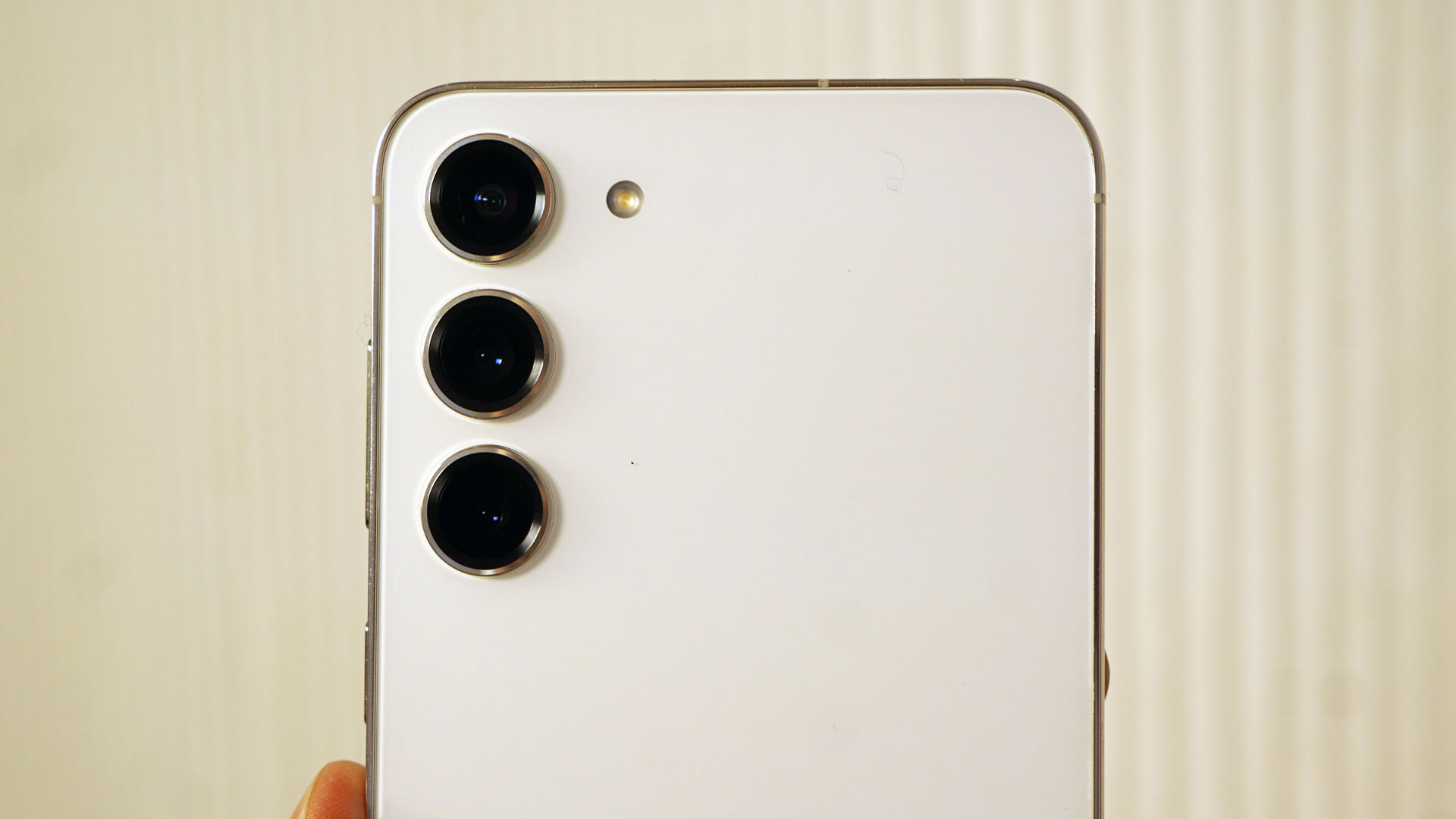
Thanks to the removal of the raised metal contour around the camera system, all three lenses look a little larger, but this is essentially the same camera setup as on the Galaxy S22. The big differences in image capture performance are driven, naturally, by the Qualcomm Snapdragon 8 Gen 2 that backs them up.
The three main rear cameras are:
- 50MP (OIS) f/1.8 wide, 85-degree FOV
- 12MP f/2.2 ultrawide, 120-degree FOV
- 10MP (OIS) f/2.4 telephoto (3x), 36-degree FOV
It's a shame that the Galaxy S23 and S23 Plus didn't adopt the Galaxy S22 Ultra's camera array, with its 108MP sensor and that amazing 100x space zoom. Still, this array, with its upgraded image sensor and image processing, is nothing to sneeze at.
I took a bunch of photos in the controlled space of a studio, trying out the wide, main, and telephoto lenses, and pushing the 30x Space Zoom. The performance of all three cameras was good. In fact, it seemed like they might be slightly better than what I experienced when I tested the similar array on the Galaxy S22 and S22 Plus.
Both color accuracy and definition were excellent. The 50MP sensor shoots, by default, in 4.5-to-1 pixel-binning mode. I also shot some unbinned 50MP images with the main camera. The capture and processing were slower than I expected, but this is not the mode most people will use. I will say that, with those 50MP images, I could pinch and zoom to a high level of detail.
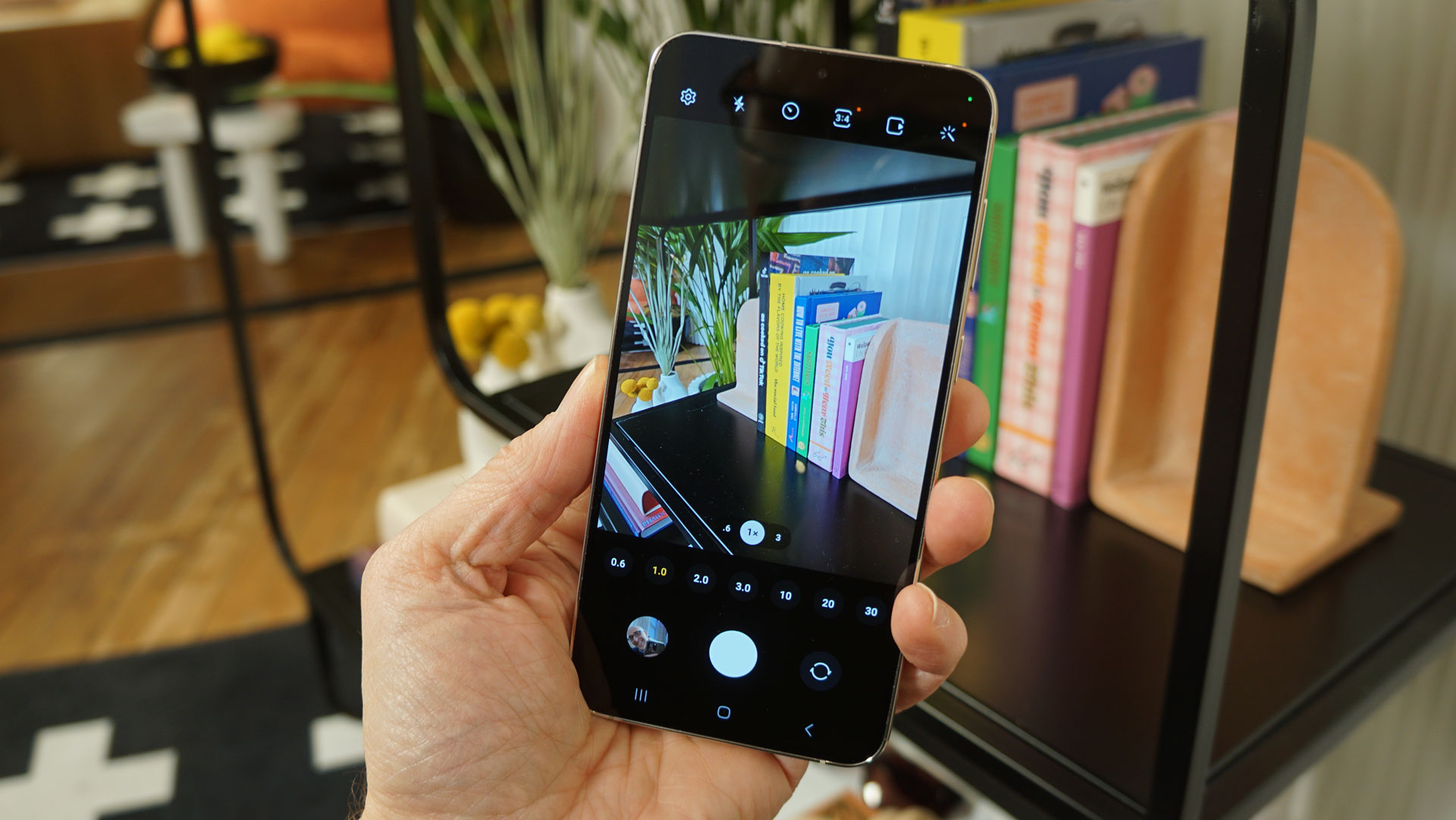
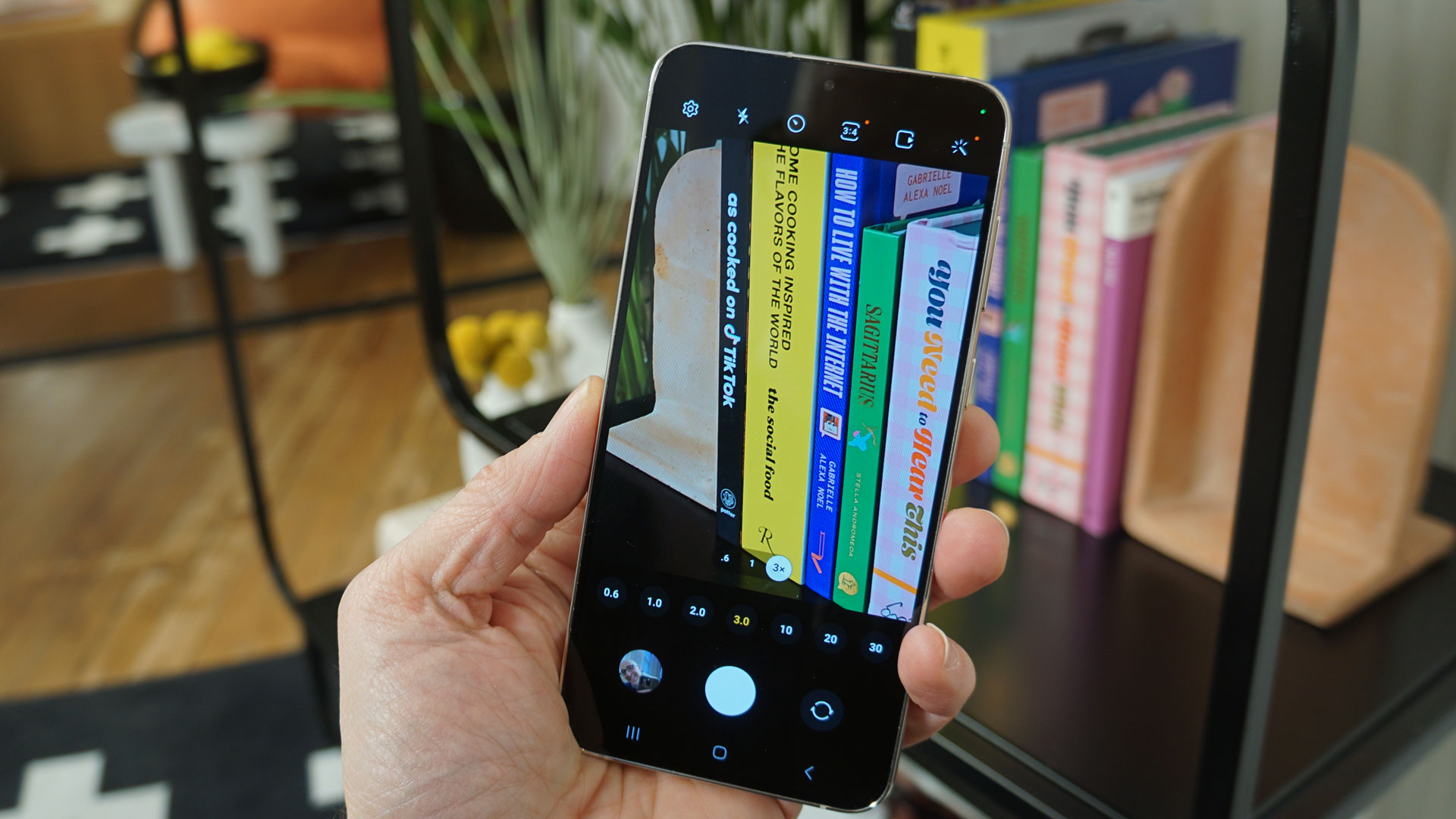
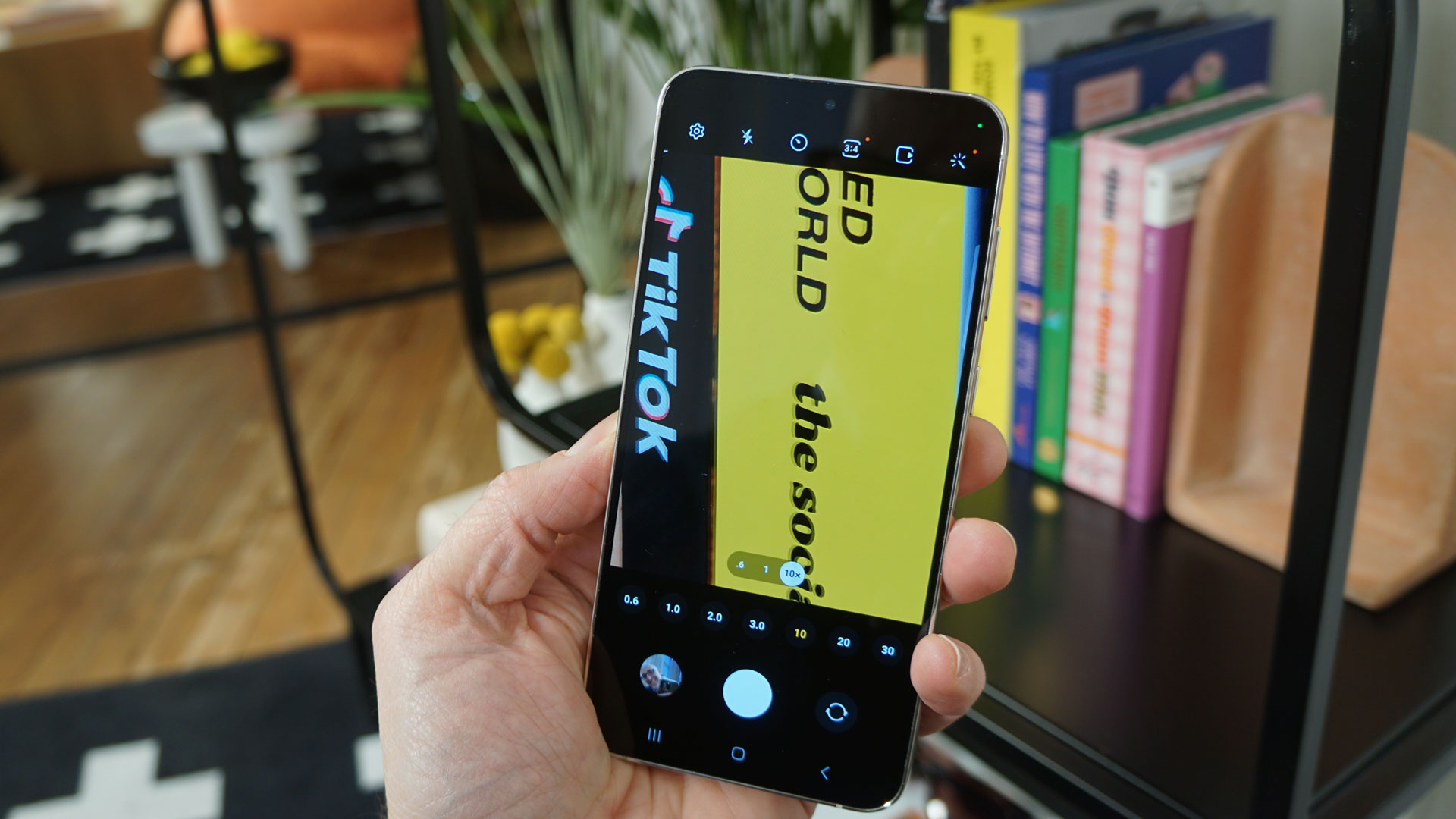
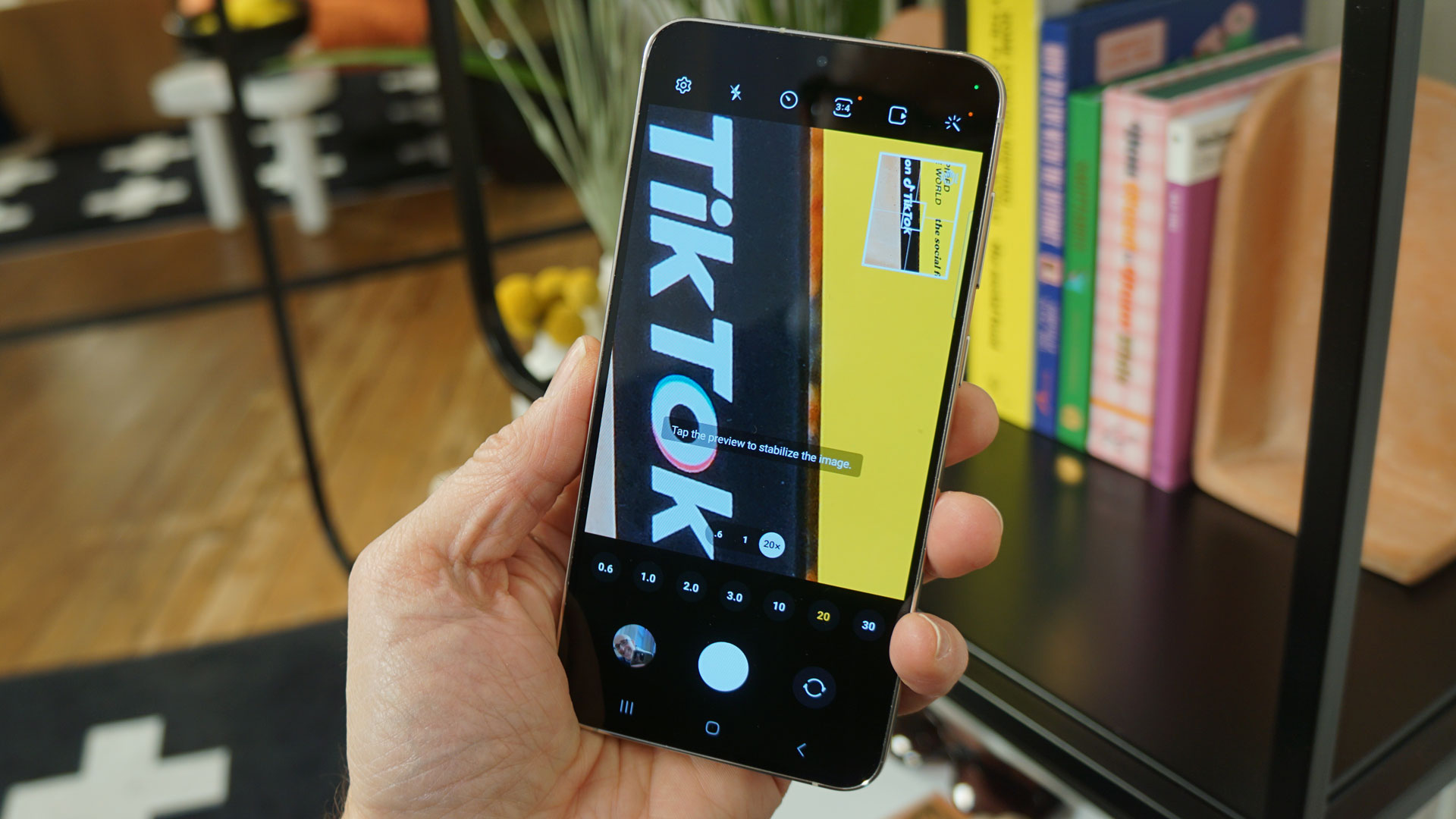
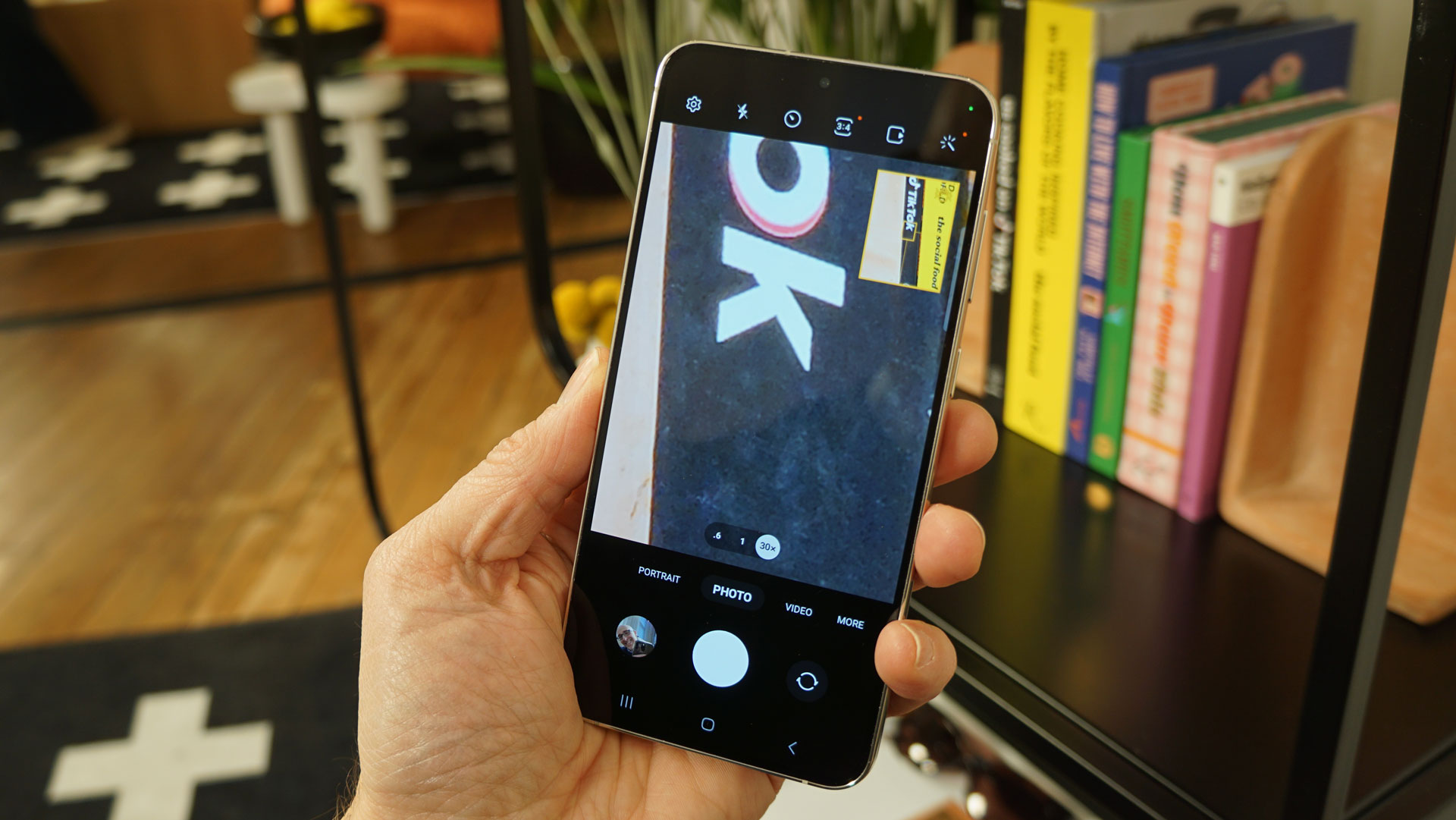
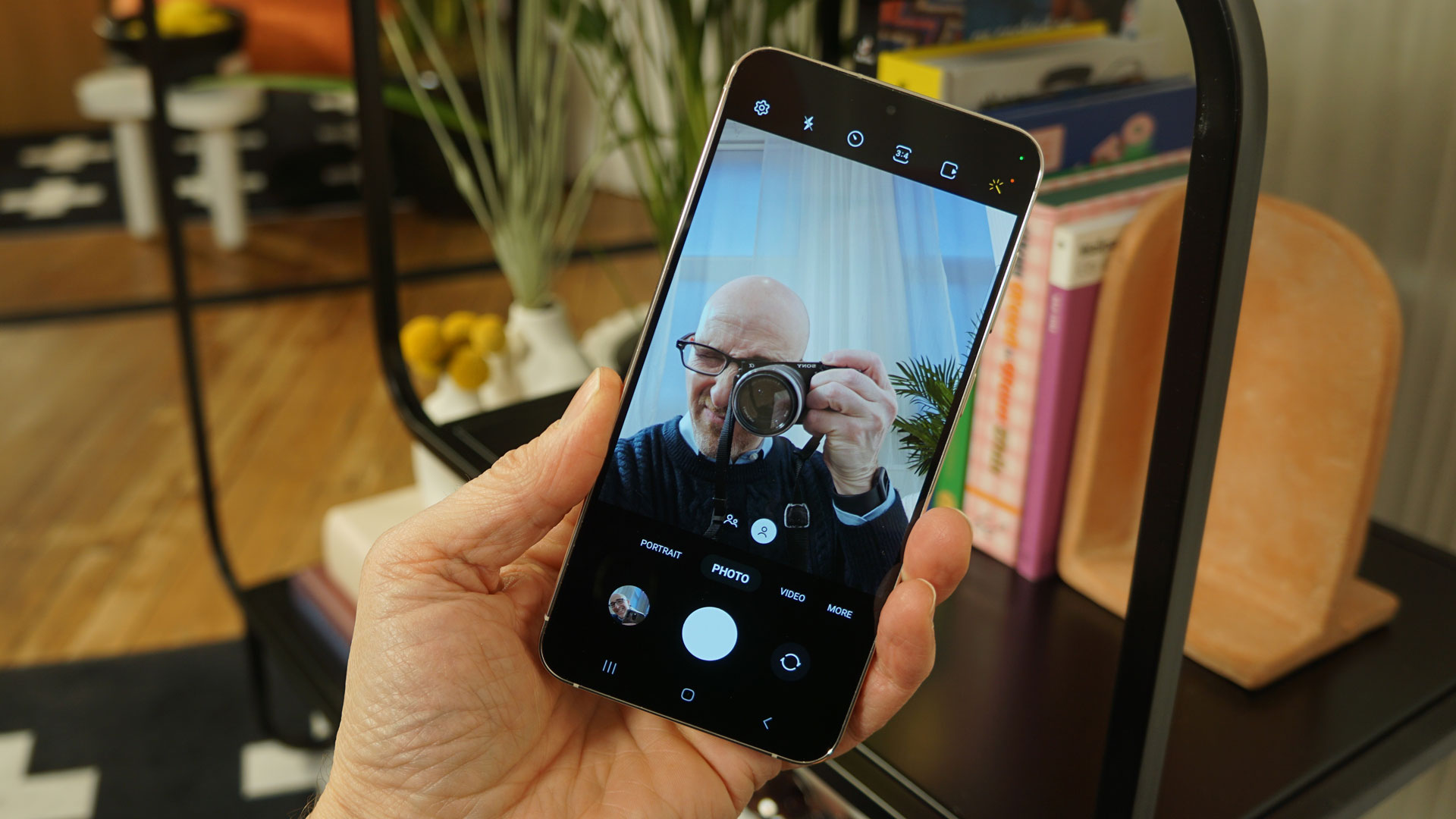
Samsung is promising improved 'Nightography,' which is not something I could really test, but I did push the low-light performance a bit.
In the studio, I took a heavy blanket and put a bowl of fake lemons under it. Then I held the phone under the blanket, and used the volume up button, which also serves as a shutter button, to take some photos. Considering the conditions, the Galaxy S23 Plus did a nice job.
On the front is a new 12MP camera, un upgrsde . I took some selfies in both standard and portrait modes, and the level of detail was excellent in both cases. I marveled at how old looked, and realized that it's time to whiten my teeth. Thanks a lot, Samsung.
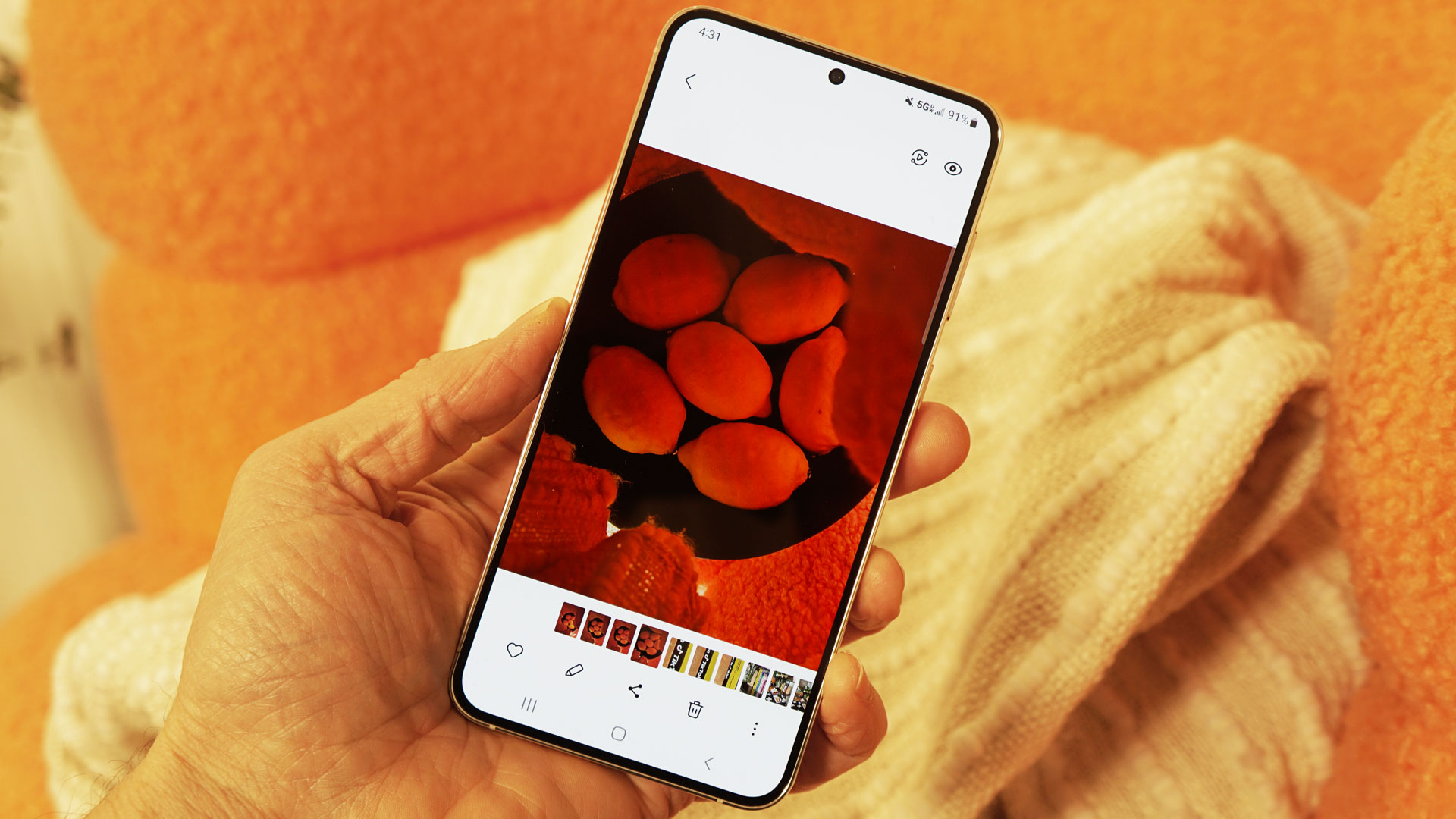
Samsung Galaxy S23 Plus hands-on: Performance and audio
- Promises of industry-leading performance
- Early interactions were smooth and snappy
Not only does the entire Samsung Galaxy S23 line get the best Qualcomm has to offer in mobile CPUs, the phones even get their own special edition of it.
The Samsung Galaxy S23 Plus (and all S23 devices) are running the Qualcomm Snapdragon 8 Gen 2 Mobile Platform for Galaxy. What this boils down to is a little more juice, with the CPU running at 3.36GHz. That's a lot of power for a little smartphone.
Obviously, I couldn't benchmark the phone to verify the performance boost. What I can say is that whatever I did on the phone felt responsive and smooth. I didn't get to play any games, or stress the Galaxy S23 Plus in a way that might show me, for instance, if the phone gets hot. The S23 Plus has a better cooling system than the S23, but that smaller phone never felt hot either. Again, I only had a couple of hours with the two phones, so take this information with a grain of salt.
I also took the time to watch the new Dungeons and Dragons movie trailer on the Samsung Galaxy S23. It looked great, and the stereo speakers got loud and sharp (not a lot of bass, obviously). I then switched on Dolby Atmos, which seemed to improve the clarity a bit. I really want to spend more time with the phone to see if the audio can get even more immersive.
All the Galaxy S23 phones are 5G-capable, and, yes, they still include physical SIM slots.
One thing Samsung is not currently touting is any kind of satellite connectivity, which, given the current competitive environment, is a little surprising. Apple, for instance, introduced Emergency SOS via Satellite with the iPhone 14 line, and Qualcomm showed at CES how a Snapdragon 8 Gen 2-equipped demo device could send and receive texts over satellite.
Both the S23 and S23 Plus pair the Snapdragon 8 Gen 2 with the X70 5G modem, the same one Qualcomm told me is capable of satellite communications; so conceivably, Samsung and its carrier partners could turn on this feature later.
However, Samsung is so far keeping mum about those capabilities on the Galaxy S23 line.
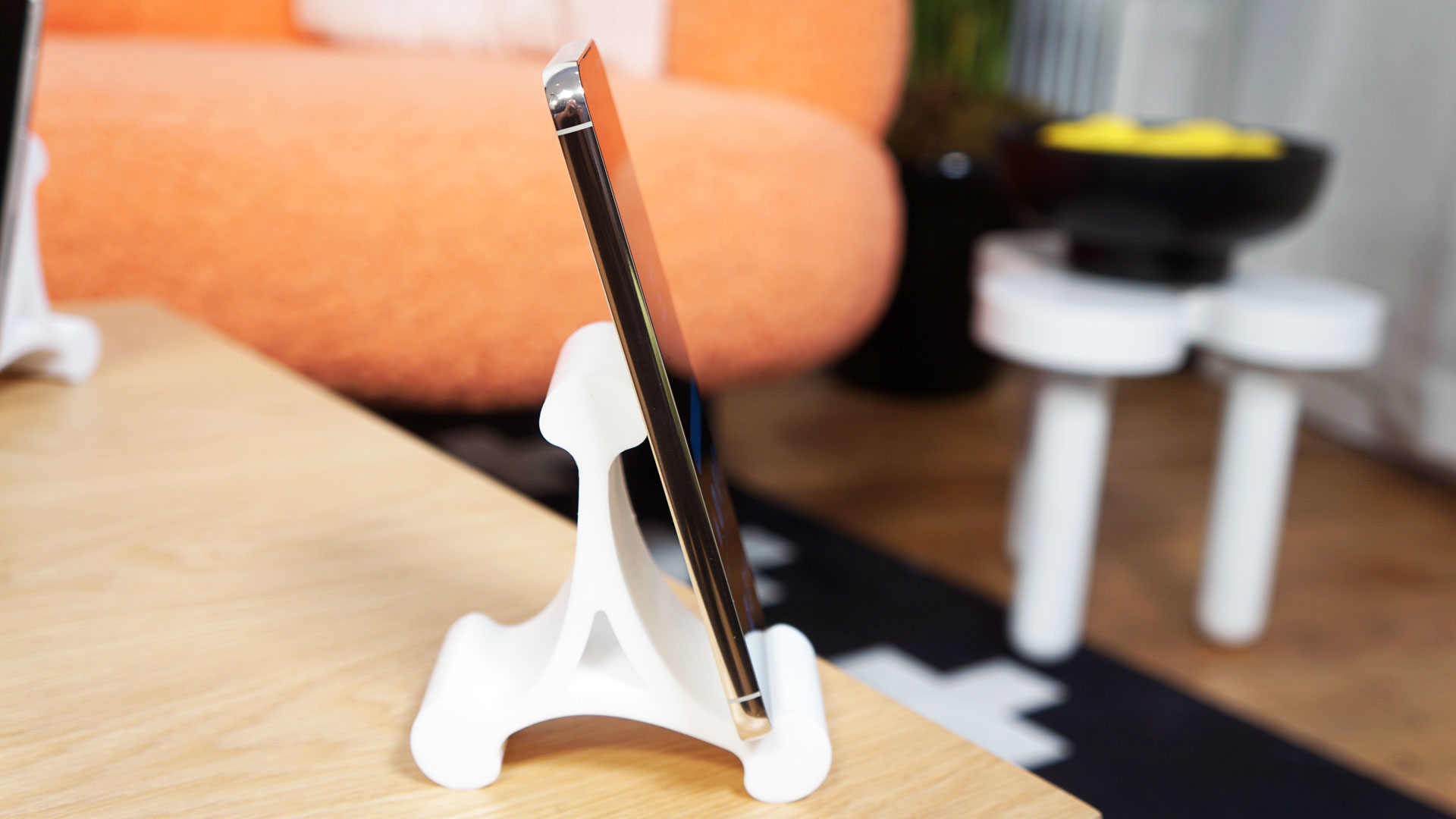
Samsung Galaxy S23 Plus hands-on: Software
The entire Samsung Galaxy S23 line will ship with Android 13 and Samsung's OneUI 5.1 overlay. Samsung is promising four generations of OS upgrades, and five years of security upgrades.
Overall, the software experience is very familiar, and virtually unchanged from the S22 line. That said, Samsung has introduced a number of new software features that I didn't have the opportunity to test, including better Samsung Notes (there are now co-create features), co-watching in Google Meet, and enhanced security features. The latter adds the ability to set your S23 to Maintenance Mode, so that all your data is protected while someone works on your Galaxy S23.
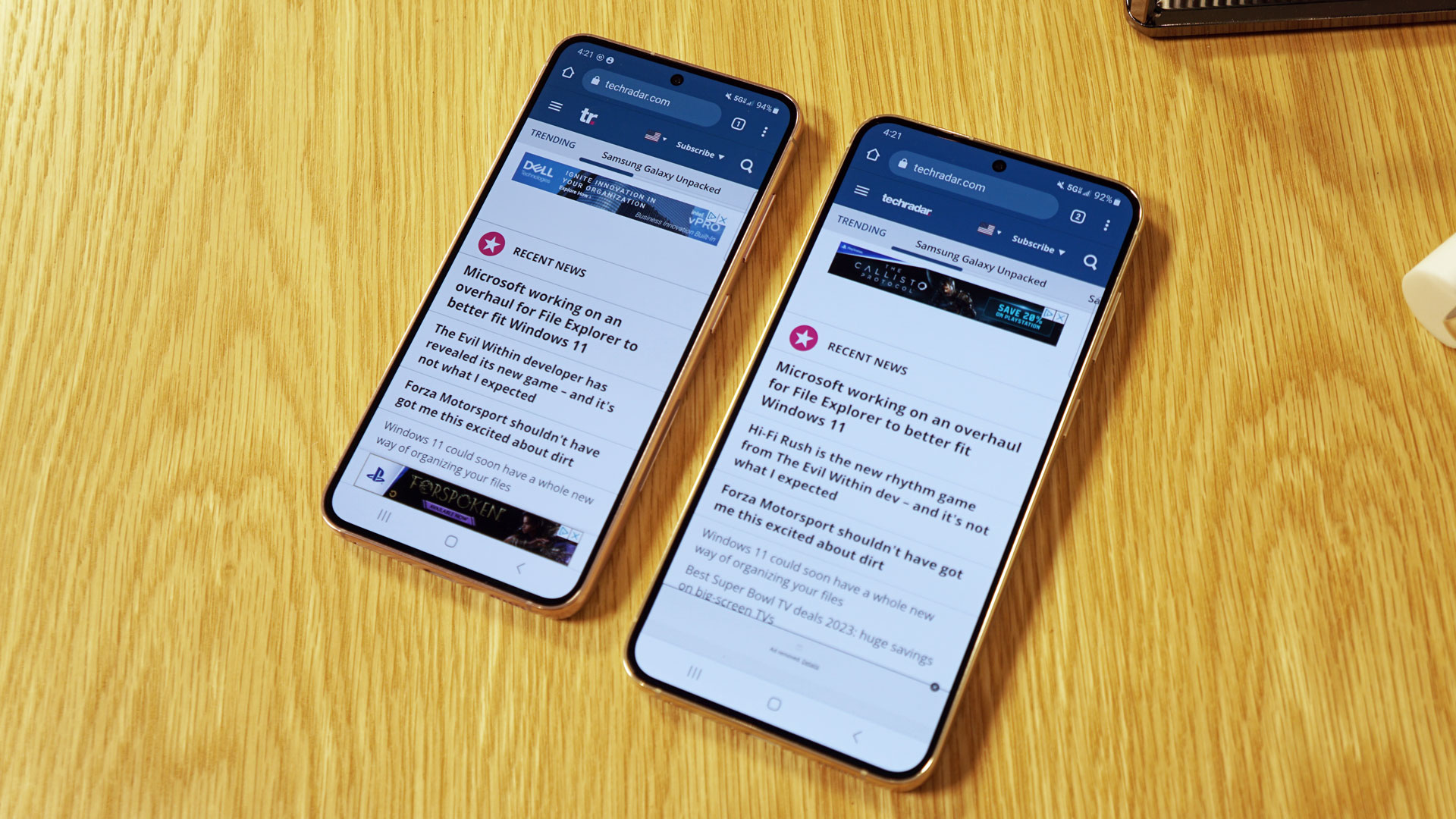
Samsung Galaxy S23 Plus hands-on: Battery life
One of the reasons you buy a bigger phone is for the bigger battery. The Galaxy S23 has a 4,700mAH battery, which is 200mAh larger than the one in the Galaxy S22 Plus, and 800mAh larger than the battery in the Galaxy S23.
This, and what should be a more efficient Qualcomm Snapdragon 8 Gen 2, could result in a lot more battery life than we got from last year's S22 Plus, although that's just speculation until we can run some battery benchmark tests.
The phone supports Super Fast Charging 2.0 (with a 45W wired fast charger). There's also Super Fast Charging Wireless (which is up to 10W+), and wireless PowerShare if you want to charge your Galaxy Buds Pros, or another Galaxy S22 or S23, on the back of the new device. Naturally, I couldn't test any of these features.
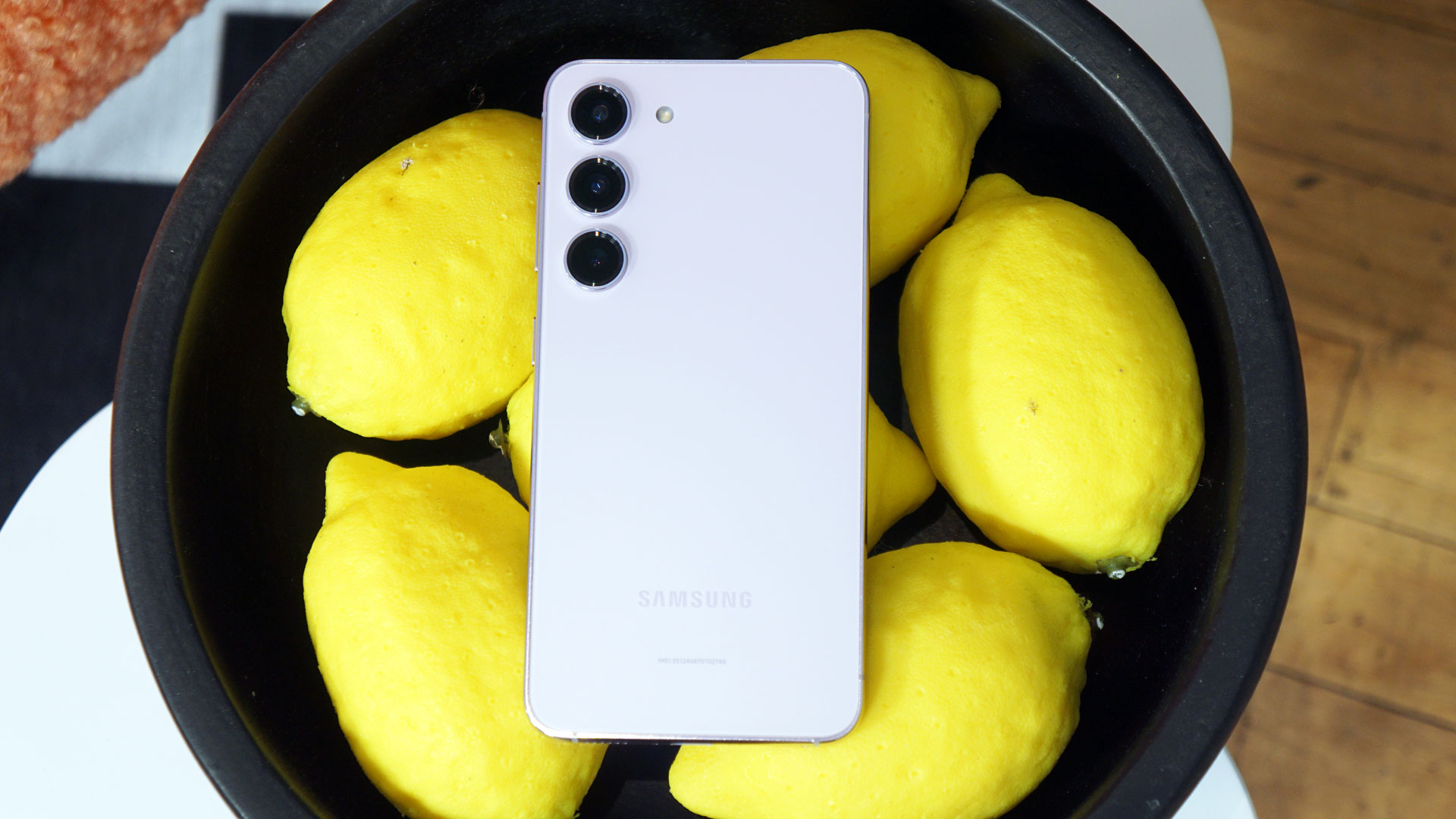
Overall, the Samsung Galaxy S23 Plus is an impressively built, attractive smartphone that appears to offer ample performance and high-quality cameras backed by an impressive mobile CPU.
For US customers, the base model in particular is better value than previous Plus models thanks the doubled storage, a better cooling system, and a much bigger battery, all for the same price as last year's Galaxy S22. Still, I'll withhold final judgement until I can fully test the handset,
from TechRadar - All the latest technology news https://ift.tt/Xb7aKd9

No comments:
Post a Comment